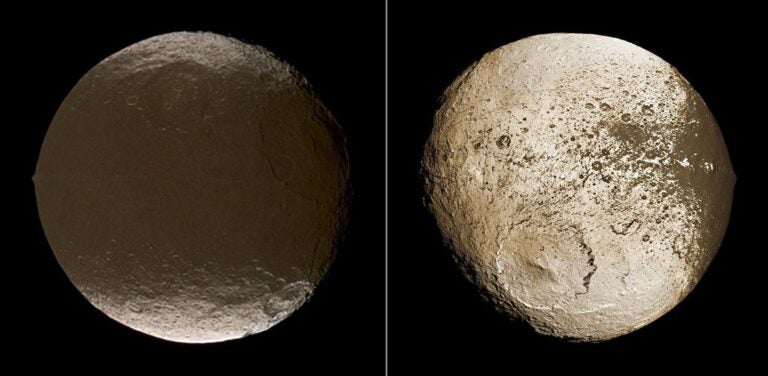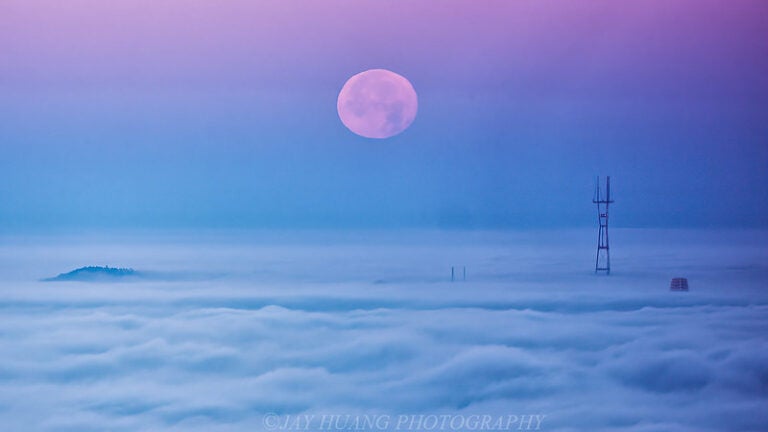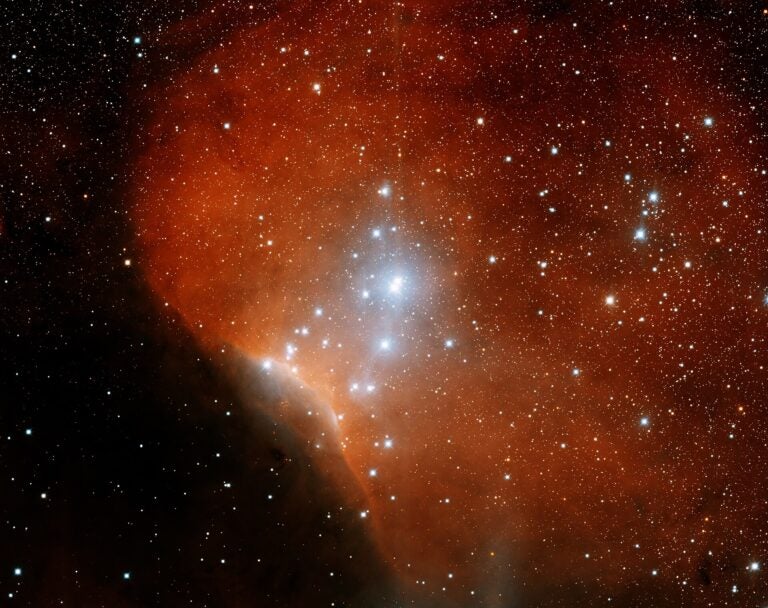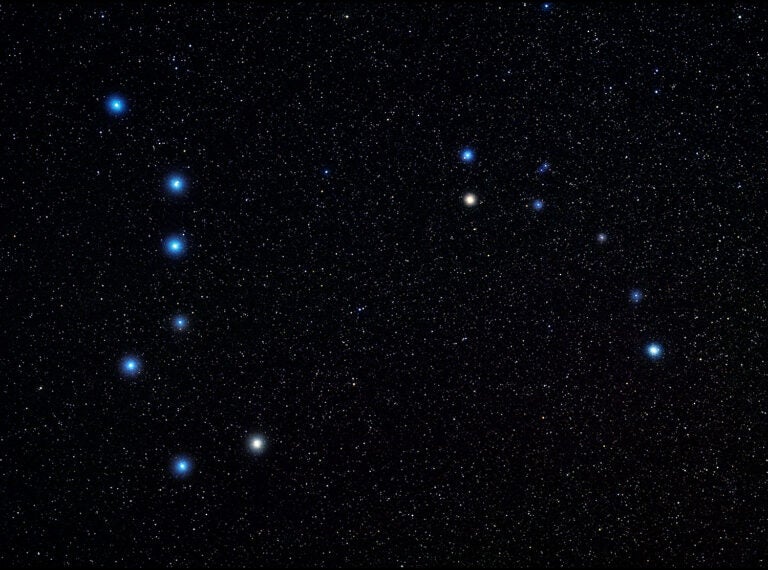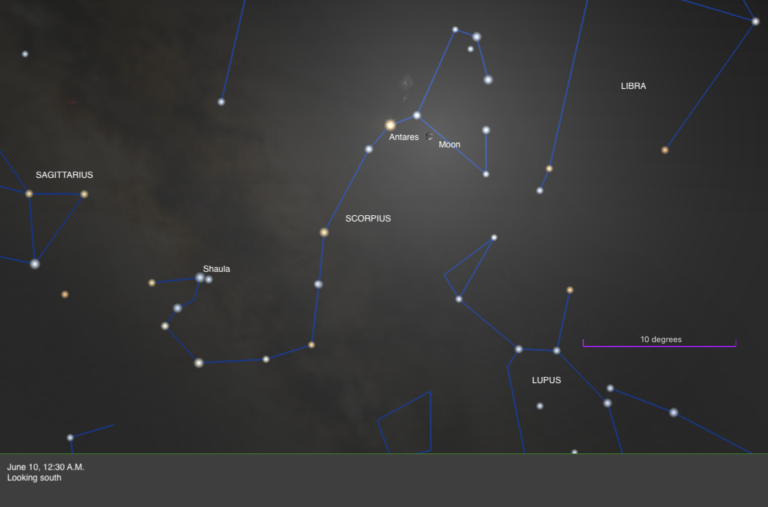
Lots of things change in the night sky. Stars rise and set during the night; constellations come and go as the seasons pass; planets waltz along the ecliptic, visiting the zodiacal constellations on their nonstop sightseeing tour of the heavens; and shooting stars zip across the sky. Sometimes, a display of the fabled aurora paints the northern sky with searchlight beams of scarlet and swaying curtains of highlighter-pen green.
But all these things only happen occasionally. You can’t be guaranteed to see each of them every night.
However, there is one thing you can be guaranteed to see moving in the sky every night, no matter where you live on the planet: satellites.
A sky full of satellites
Years after the launch of Sputnik in 1957, there are thousands of satellites orbiting Earth. And it’s no exaggeration to say that they have become an essential part of our infrastructure. Every minute of every day, satellites are taking photos of the weather, transmitting TV and radio signals, monitoring the climate, and linking people around the world. They steer our cars, guide our planes and ships, and, perhaps most important, allow us to watch cute cat videos while lazing on a beach.
In recent years, the number of satellites orbiting Earth has — if you’ll pardon the pun — skyrocketed, particularly as SpaceX has pursued its mission to fill low Earth orbit with its Starlink Wi-Fi satellites, launching some 50 at a time atop its reusable Falcon rockets. While there’s no doubt these are useful to people in remote locations, allowing them to connect to the internet for the first time in some cases, both amateur and professional astronomers are deeply concerned about their impact on the night sky and astronomical research.
But there is one satellite that, perhaps hypocritically, watchers of the night sky enjoy. Some even go out of their way to see it: the International Space Station (ISS).
How to see the ISS
So, how do you see the ISS for the first time, tonight?
- First, check NASA’s web site (there are also apps) to see if it’s visible — you may have to wait a few days until it is. If the ISS will put in an appearance tonight, use your most reliable weather app to check the forecast — again, you might have to wait a few days!
- Next, choose your observing site carefully. The more you can see of the sky, the better. During high passes, the ISS clears most trees and buildings, but a low pass might be hidden by features on your horizon, so figure out in advance where you should go to ensure you see it.
- Be at your observing site a good 10 or even 15 minutes before the ISS pass is due to begin. Then, look for a “star” rising in the west at the predicted time. If you see one that’s flashing, it’s a plane. If it’s shining with a steady light, it’s the ISS. It won’t look particularly bright at first, but it will grow brighter as it gains height. Then, just follow the ISS across the sky, enjoying the sight of it cruising through the constellations, passing background stars and planets along the way.
- If you have a pair of binoculars handy, definitely swing them toward the ISS. They will enhance its color and brightness a lot. But even if you don’t have any, just enjoy watching it with your naked eye. It’s still a thrilling sight.
- Eventually the ISS will fade as it moves out of direct sunlight and into Earth’s shadow, effectively going into eclipse. Sometimes it fades slowly, as if on a dimmer switch, while other times it almost appears to be snuffed out like a candle. But eventually it will be gone, surrendering the night sky to the stars once more.
- And that’s how you see the ISS. As the saying goes, it’s not rocket science. It’s just a matter of looking at the right time from the right place.
- One last thing. As you’re watching the ISS go over, give it a wave. You never know, the crew might be looking down at you just as you’re looking up at them!
The ISS essentially looks like a starlike point of light that moves across the sky from west to east. However, it is not visible from every location every night. Sometimes it can be seen in the wee small hours before sunrise, sometimes as the evening sky is darkening after sunset. Unlike an airplane, the ISS doesn’t blink or flash, instead shining with a steady light.
How impressive the ISS looks during any particular pass depends on where it is in its orbit and where you are when you’re looking up at it. Sometimes its track carries it very high in the sky, even overhead, while other times it’s a lot lower, scraping the trees. The higher its altitude, the brighter the ISS will appear. At its brightest, the ISS can nearly rival Venus at its best, and is a genuinely stunning sight as it arcs across the sky, looking like a lantern that someone has thrown up into it.
Editor’s note: This article was first published in 2023 and has been updated.

